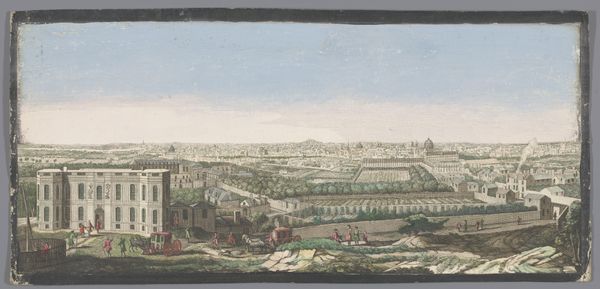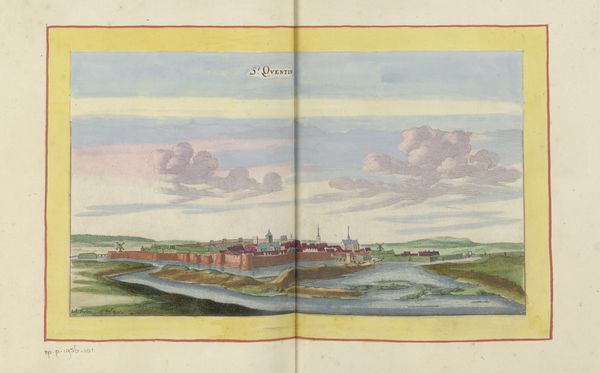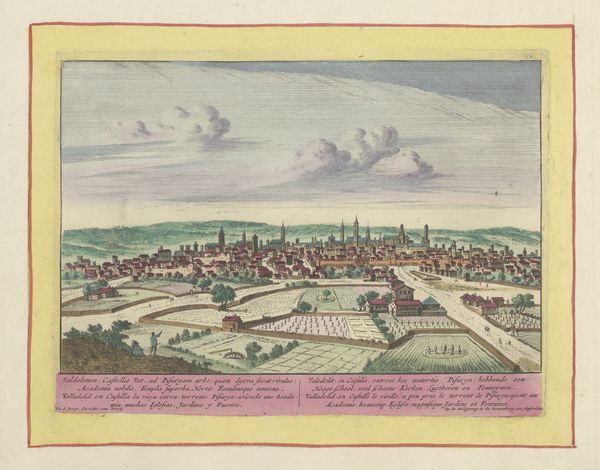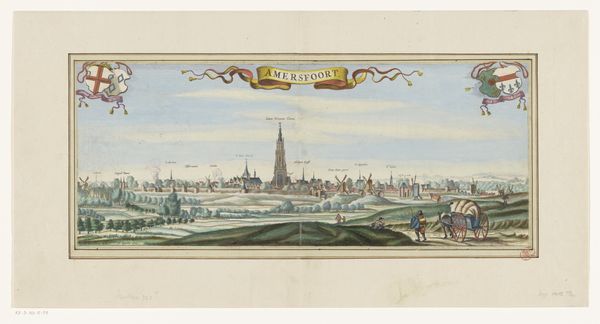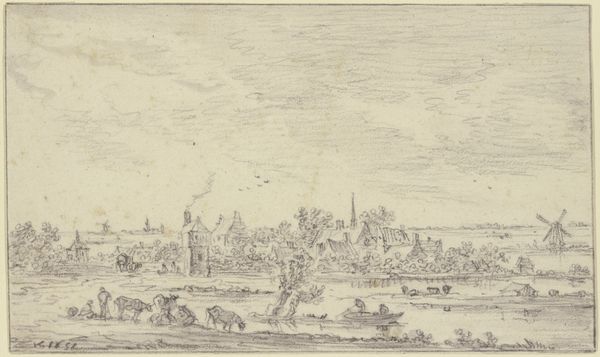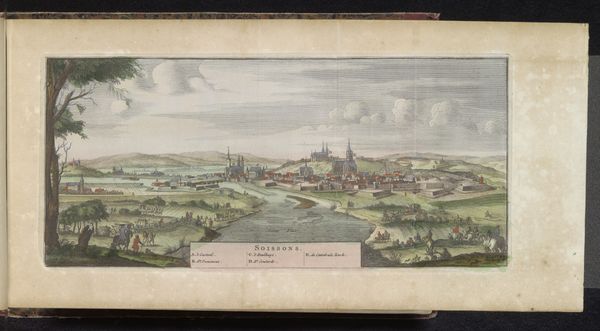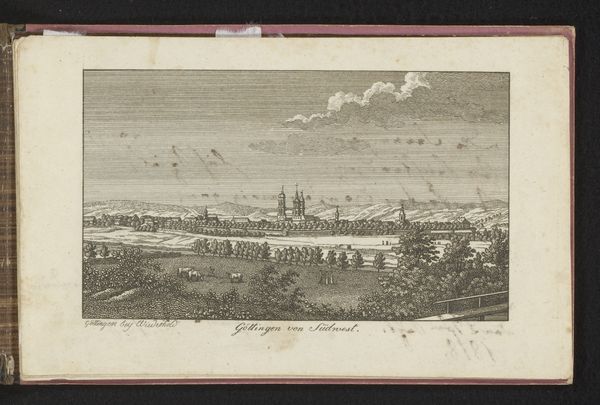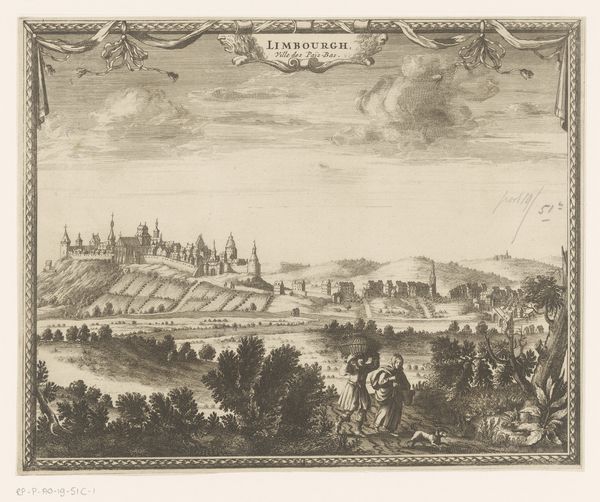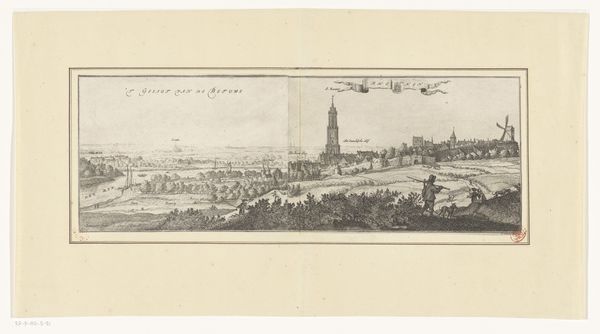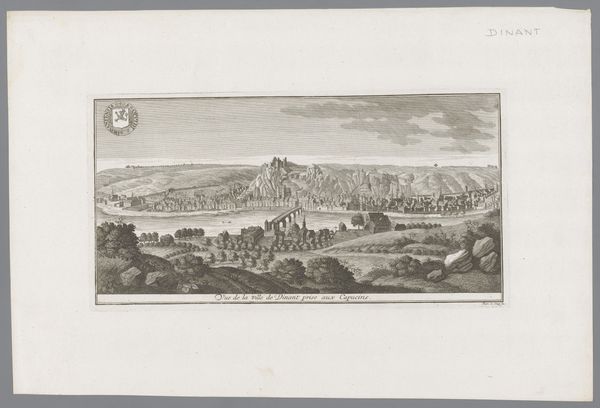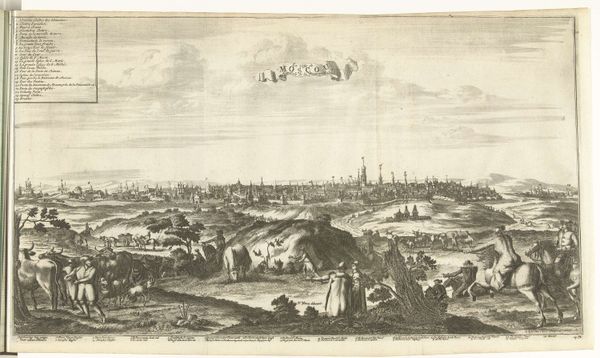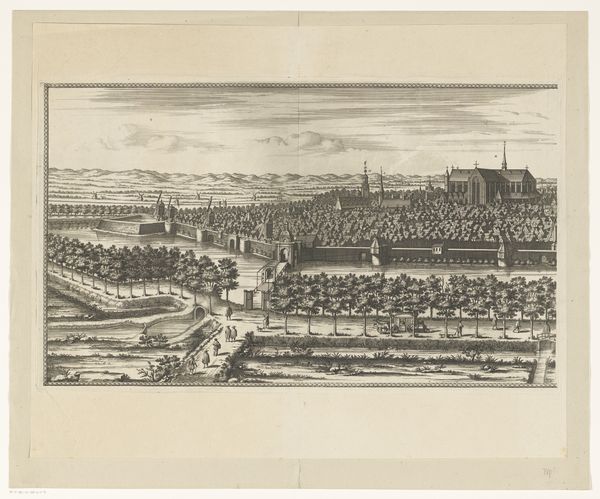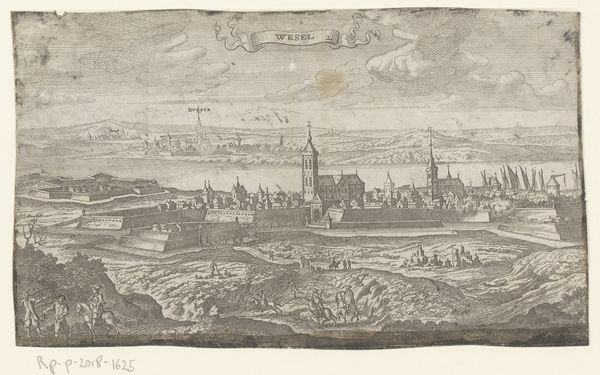
print, watercolor
#
baroque
# print
#
landscape
#
watercolor
#
coloured pencil
#
cityscape
#
watercolor
Dimensions: height 149 mm, width 420 mm, height 163 mm, width 433 mm
Copyright: Rijks Museum: Open Domain
Editor: This delicate print, "View of Nijmegen from the South" made around 1738 by Jan Ruyter, is just gorgeous. The colors, despite being watercolor and print, are so vibrant. The composition shows the town sitting up on a hill overlooking fields and water. What do you see when you look at this, considering the period it was made in? Curator: Let's consider this print not merely as a depiction of Nijmegen, but as a product of its time, embedded within specific socio-economic structures. The use of watercolor and print suggests a democratizing force—prints allowed wider distribution of imagery, yet the hand-applied color hints at artisanal production, doesn’t it? What labor went into its making, from paper production to the application of those pigments? Editor: That’s a good point, I hadn't thought about the physical work that went into making prints like these accessible. Does the cityscape itself tell us anything about production and consumption back then? Curator: Certainly. Cityscapes were frequently commissioned, not simply for aesthetic pleasure, but to demonstrate the economic and social power of the depicted city. What goods are likely flowing through Nijmegen in this period? The river traffic and surrounding agricultural lands indicate flows of commerce and food production, right? Consider also the relationship between the artisans who produced this image, the patrons who commissioned it, and the broader public who consumed it. Were they trying to sell something? Editor: So it is like promotional material in a way? It highlights the best features to generate wealth. That's interesting. Looking at it now, I am also considering what kinds of pigments they were using, how accessible they were... Curator: Exactly! The materiality of art brings us closer to understanding historical power dynamics and daily life, beyond just aesthetic appreciation, I believe. Editor: Definitely. Thinking about this image in terms of materials and labour gives it a whole new dimension for me! Thanks.
Comments
No comments
Be the first to comment and join the conversation on the ultimate creative platform.
